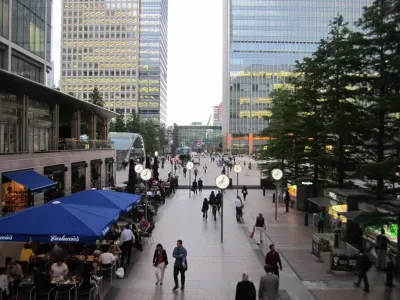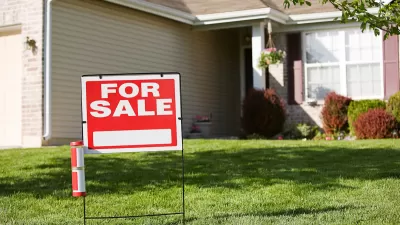It's no secret that urban centers are doing better today than they were 30 years ago. New FHFA data on housing prices confirms the trend and suggests that a changing environment (as opposed to changing preferences) account for it.

Chances are you already know about the "urban renaissance" currently sweeping the United States. "Downtown boosters and academics have argued that we're witnessing an urban revival in the United States. But there remains deep debate over how widespread the pattern really is and whether it points to a fundamental shift in where and how Americans live."
Emily Badger and Darla Cameron cover a new home price index from the Federal Housing Finance Agency, "based on unprecedented mortgage data covering 18,000 zip codes and nearly 100 million transactions between 1975 and 2015" that gauges how homes appreciate and depreciate in value.
The index confirms that central areas have indeed become more desirable and expensive. The researchers also point to patterns suggesting that consumer preferences (such as a supposed millennial proclivity for the city) do not account for the change. "'Data suggests that you don't need changing preferences in order to arrive at the patterns we see,' [senior economist William D. Larson] says."
"The traffic got worse. The crime lessened. The amenities improved. And at least some people have accrued more wealth to spend on high-end restaurants. In many ways, it's the environment that has changed, not us, Larson argues."
The data also shows that alongside an urban price renaissance, suburbs and exurbs are still growing even faster. The demographics, however, are shifting: wealthier and whiter in the cities, more people of color in the suburbs.
FULL STORY: Americans are paying more to live in the very places they once abandoned

Study: Maui’s Plan to Convert Vacation Rentals to Long-Term Housing Could Cause Nearly $1 Billion Economic Loss
The plan would reduce visitor accommodation by 25,% resulting in 1,900 jobs lost.

North Texas Transit Leaders Tout Benefits of TOD for Growing Region
At a summit focused on transit-oriented development, policymakers discussed how North Texas’ expanded light rail system can serve as a tool for economic growth.

Why Should We Subsidize Public Transportation?
Many public transit agencies face financial stress due to rising costs, declining fare revenue, and declining subsidies. Transit advocates must provide a strong business case for increasing public transit funding.

How to Make US Trains Faster
Changes to boarding platforms and a switch to electric trains could improve U.S. passenger rail service without the added cost of high-speed rail.

Columbia’s Revitalized ‘Loop’ Is a Hub for Local Entrepreneurs
A focus on small businesses is helping a commercial corridor in Columbia, Missouri thrive.

Invasive Insect Threatens Minnesota’s Ash Forests
The Emerald Ash Borer is a rapidly spreading invasive pest threatening Minnesota’s ash trees, and homeowners are encouraged to plant diverse replacement species, avoid moving ash firewood, and monitor for signs of infestation.
Urban Design for Planners 1: Software Tools
This six-course series explores essential urban design concepts using open source software and equips planners with the tools they need to participate fully in the urban design process.
Planning for Universal Design
Learn the tools for implementing Universal Design in planning regulations.
City of Santa Clarita
Ascent Environmental
Institute for Housing and Urban Development Studies (IHS)
City of Grandview
Harvard GSD Executive Education
Toledo-Lucas County Plan Commissions
Salt Lake City
NYU Wagner Graduate School of Public Service





























